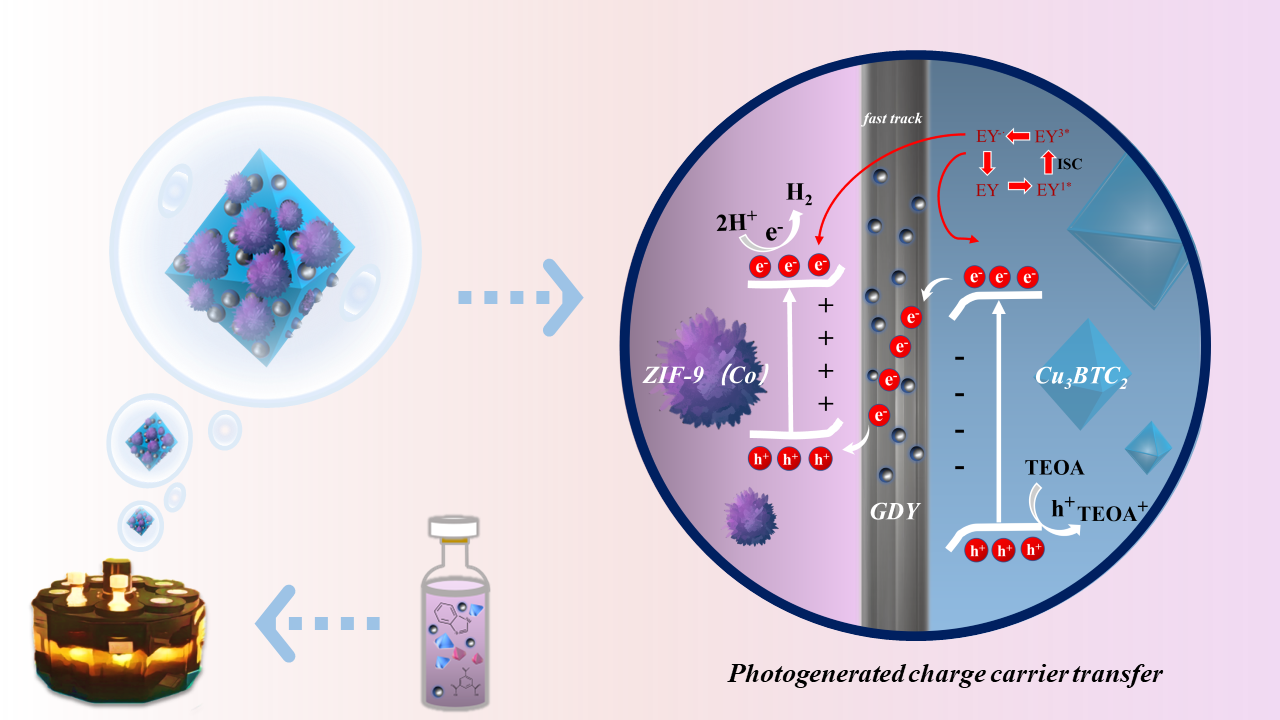
Cover Picture
Effective photocatalytic hydrogen evolution by Ti3C2-modified CdS synergized with N-doped C-coated Cu2O in S-scheme heterojunctions
Effective photocatalytic hydrogen evolution by Ti3C2-modified CdS synergized with N-doped C-coated Cu2O in S-scheme heterojunctions
Kaihui Huang, Boning Feng, Xinghua Wen, Lei Hao, Difa Xu, Guijie Liang*, Rongchen Shen*, Xin Li*
Submit a ManuscriptFacilitating efficient photocatalytic hydrogen evolution via enhanced carrier migration at MOF-on-MOF S-scheme heterojunction interfaces through a graphdiyne (CnH2n-2) electron transport layer
Fei Jin, Bolin Yang, Xuanpu Wang, Teng Li, Noritatsu Tsubaki, Zhiliang Jin*
Chin. J. Struct. Chem., 2023, 42: 100198. DOI: 10.1016/j.cjsc.2023.100198
December 15, 2023
Graphdiyne; S-scheme heterojunction; MOFs; Photocatalytic hydrogen evolution
ABSTRACT
Interface engineering of photocatalysts is an effective way to enhance their photocatalytic activity. In this work, the MOF-on-MOF strategy was used to construct the ZIF-9(Co)/Cu3BTC2 photocatalyst in situ. Moreover, graphdiyne, possessing an inherent capability to facilitate rapid electron transfer at the interface, has been introduced into the ZIF-9(Co)/Cu3BTC2 interface to regulate the interfacial carrier migration. The photogenerated carrier transfer capability has been significantly enhanced by the interfacial synergy, while retaining the original active sites and high specific surface area. The exceptional efficiency performance of the composite catalyst under identical conditions could be attributed to the following two key factors: (i) The interfacial S-scheme heterojunction in ZIF-9(Co)/Cu3BTC2 provides the composite catalyst with strong reduction activity, facilitating the involvement of additional electrons in the reduction reaction through bended bands and an internal electric field. (ii) Carrier dynamics analysis shows that graphdiyne, as an electron transport layer, accelerates the charge migration rate at the S-scheme heterojunction interface through the electron relay effect. The incorporation of graphdiyne greatly improves the catalytic activity of MOFs and also demonstrates the great potential of graphdiyne in photocatalysis. This work provides a feasible idea for the interface engineering design of graphdiyne in photocatalysts.







